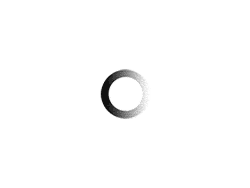Clomid is a popular drug that bodybuilders use to help them restart their natural testosterone production during a Post Cycle Therapy (PCT). In this article, we will look at the advantages and disadvantages of using Clomid, as well as offer advice on how to use this drug safely and effectively.
What is Clomid?
Clomid is a medication used to treat infertility in women. It is a type of drug called an ovulatory stimulant, which works by increasing the production of certain hormones in the body to help ovulation occur. Clomid is typically used for women who have trouble ovulating due to polycystic ovary syndrome (PCOS) or other fertility issues. It is taken orally and is often used in combination with other fertility treatments such as in vitro fertilization (IVF).
In bodybuilding, it’s also used as a Post Cycle Therapy (PCT) to restore natural testosterone production after using anabolic steroids.
Here’s more information about T3 dosage guide
What is Clomid used for
Clomid is often used as part of a Post Cycle Therapy (PCT) protocol after a cycle of anabolic steroids. Anabolic steroids are synthetic hormones that mimic the effects of testosterone, they help to increase muscle mass, strength, and performance, but they also suppress the body’s natural testosterone production.
Clomid is used in PCT to restore the body’s natural testosterone production after a cycle of anabolic steroids, this helps to prevent the loss of muscle mass and strength loss, and also to prevent side effects such as testicular atrophy.

The Proper Dose of Clomid
The correct dose of Clomid for medical use is determined by a healthcare professional and will vary depending on the individual’s medical condition, response to treatment, and other factors. The standard starting dose for Clomid is 50 mg per day for five days, usually starting on the third day of a woman’s menstrual cycle. The healthcare professional may adjust the dosage based on the response to treatment. The maximum recommended dose is 100 mg per day.
For bodybuilding purposes, the common dose of Clomid is between 25-50mg per day, typically during a PCT protocol it will be used at 50mg for 2 weeks, then 25mg for a further 2 weeks.
Read More About T3 side effects
Clomid Side Effects
Clomid does not have a lot of serious side effects when used correctly, however, like with all medication, there is still a risk.
The common side effects of Clomid include:
- Hot flashes: This is a common side effect caused by the increased levels of hormones in the body.
- Nausea: Some people may experience nausea or an upset stomach while taking Clomid.
- Headaches: Some people may experience headaches as a side effect of Clomid.
- Visual disturbances: Some people may experience visual disturbances such as blurred vision, double vision, or spots in their vision.
- Mood swings: Clomid can cause mood swings or emotional changes.
- Ovarian hyperstimulation syndrome: Clomid can cause the ovaries to become swollen and painful.
- Ovarian cysts: Clomid can cause the development of small cysts on the ovaries.
- Heavy or irregular periods: Clomid can cause changes in the menstrual cycle.
It’s important to note that everyone’s reaction to the medication is different, so not all people will experience the same side effects.
Clomid for Men
Clomid is often used as part of a post-cycle therapy (PCT) regimen after a cycle of anabolic steroids. The benefits of using Clomid for PCT include:
- Restoring natural testosterone production: Anabolic steroids suppress the body’s natural testosterone production, and Clomid helps to restore it. This helps to prevent muscle mass and strength loss, and also to prevent side effects such as testicular atrophy.
- Maintaining muscle mass: Clomid helps to maintain muscle mass and strength by preventing testosterone levels from dropping too low after a cycle of anabolic steroids.
- Preventing oestrogen-related side effects: Anabolic steroids can cause an increase in oestrogen levels, which can lead to side effects such as gynecomastia (enlarged breasts in men) or water retention. Clomid can help to reduce these side effects by blocking the conversion of testosterone to oestrogen.
- Improving libido: Low testosterone levels can lead to a decrease in libido (sex drive). Clomid can help to improve libido by restoring natural testosterone production.
- Improving overall well-being: Low testosterone levels can cause a variety of physical and mental symptoms such as fatigue, depression, and irritability. Clomid can help to improve overall well-being by restoring natural testosterone production.

Clomid for Women
The use of Clomid in female bodybuilders is not common or recommended. Clomid is a medication used to treat infertility in women and it’s typically used to stimulate ovulation in women who have trouble ovulating due to polycystic ovary syndrome (PCOS) or other fertility issues.
Anabolic steroids, which are commonly used by male bodybuilders, can cause masculinizing side effects in women such as deepened voice, facial hair growth, and acne. And Clomid is not effective in reversing these side effects.
Clomid for Fertility
Clomid is considered to be an effective treatment for infertility, with success rates varying depending on the individual’s specific condition and other factors. According to some studies, about 80% of women who ovulate as a result of taking Clomid will become pregnant within six months of treatment.
In women with PCOS, Clomid can increase the chances of ovulation and pregnancy by up to 50%. It’s important to note that Clomid does not guarantee pregnancy and it’s often used as a first-line treatment for infertility before moving on to more advanced treatments like in vitro fertilization (IVF).
Letrozole vs Clomid
Letrozole and Clomid are both medications that are sometimes used by bodybuilders, however, they are used for different purposes and have different mechanisms of action.
Clomid is an ovulatory stimulant that is used to treat infertility in women. It works by increasing the production of certain hormones in the body to help ovulation occur. In bodybuilding, Clomid is often used as a post-cycle therapy (PCT) to restore natural testosterone production after using anabolic steroids.
Letrozole, on the other hand, is an aromatase inhibitor that is used to treat breast cancer in women. It works by decreasing the amount of oestrogen produced in the body. In bodybuilding, Letrozole is often used to reduce the risk of gynecomastia (enlarged breasts in men) and other oestrogen-related side effects that can occur as a result of using anabolic steroids.
Letrozole vs Clomid for Fertility
Letrozole and Clomid are both medications that are used to treat infertility in women, but they are used for different purposes and have different mechanisms of action.
Clomid is an ovulatory stimulant that is used to treat infertility in women who have trouble ovulating due to polycystic ovary syndrome (PCOS) or other fertility issues. It works by increasing the production of certain hormones in the body to help ovulation occur. Clomid is considered to be an effective treatment for infertility, with success rates varying depending on the individual’s specific condition and other factors.
Letrozole, on the other hand, is an aromatase inhibitor that is used to treat infertility in women with anovulation (a lack of ovulation) who have PCOS. It works by decreasing the amount of oestrogen produced in the body. Letrozole has been found to be more effective than Clomid in women with PCOS. It’s been shown to increase the chances of ovulation and pregnancy by up to 80%.
It’s important to note that both medications should only be used under the guidance and supervision of a healthcare professional, as they can cause serious side effects if not used properly. And, the choice of medication and the protocol should be individualized for each patient, and it’s important to follow the professional’s advice.

Clomid vs HCG
Clomid (clomiphene citrate) and hCG (human chorionic gonadotropin) are both medications that are sometimes used by bodybuilders as performance-enhancing drugs to increase testosterone levels in the body. However, they are used for different purposes and have different mechanisms of action.
Clomid is an ovulatory stimulant that is used to treat infertility in women. It works by increasing the production of certain hormones in the body to help ovulation occur. In bodybuilding, Clomid is often used as a post-cycle therapy (PCT) to restore natural testosterone production after using anabolic steroids.
HCG, on the other hand, is a hormone that is similar to luteinizing hormone (LH), which is produced by the pituitary gland. In bodybuilding, hCG is sometimes used to stimulate natural testosterone production during or after a cycle of anabolic steroids. It is also used to prevent testicular atrophy, which is a common side effect of anabolic steroid use.
Arimidex vs Clomid
Clomid (clomiphene citrate) and Arimidex (anastrozole) are both commonly used as part of post-cycle therapy (PCT) for individuals who have completed a cycle of anabolic steroids.
Clomid is an anti-oestrogen medication that is typically used to stimulate ovulation in women. In men, it is used to help restore the body’s natural testosterone production after a cycle of anabolic steroids.
Arimidex, on the other hand, is an aromatase inhibitor. It works by blocking the enzyme aromatase, which converts testosterone to oestrogen. This can help reduce the amount of oestrogen in the body and prevent the negative side effects associated with high oestrogen levels, such as gynecomastia (breast enlargement) and water retention.
Both Clomid and Arimidex can be effective as part of a PCT regimen, but they are typically used in different ways. Clomid is usually used to help restore the body’s natural testosterone production, while Arimidex is used to help control oestrogen levels.
In conclusion, It’s not a competition between Clomid and Arimidex. They are used in different ways and for different purposes, and a PCT protocol may include both of them.



